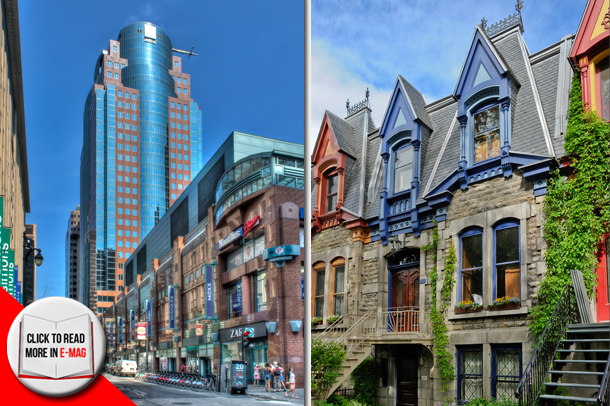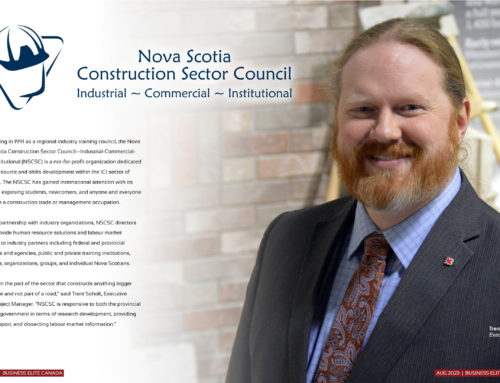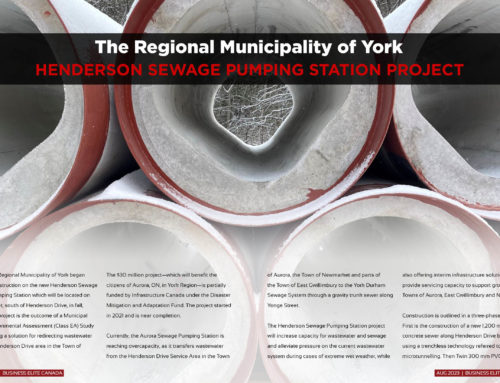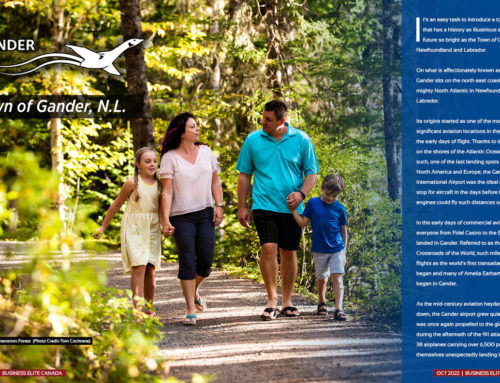Passe au vert
By Leah Kellar
Three hundred years and more than a generation since the first European settlement was established on the 48-kilometre island now known as Montréal, the Ville de Montréal/City of Montréal and local administrations, together with private and public sector partners and citizenry, are pioneering a new, green, sustainable vision with actionable initiatives that will ensure the historic city remains a place to live and grow for families of generations to come.
Under the leadership of the municipal administration, Montréal Community Sustainable Development Plan 2010-2015 recognizes that building an economically competitive city of the future means preserving its legacy for future generations. This means that taking care of the environment is priority number one for the city and its partners. Ville de Montréal and its partners comprise different committees behind the long-term initiative. They are taking a different approach to city development with the underlying belief that environmental sustainability and biodiversity go hand-in-hand with an economically prosperous city that can retain and attract a new generation of workers and families.
“We believe there is a very important link between sustainable development and economic development. If we save our resources then we will be a richer society at the end of the process,” said Réal Ménard in conversation with Business Elite Canada. Ménard is an executive committee member at city council in charge of sustainable development, environment, large parks, and green spaces, and mayor of the Mercier-Hochelaga-Maisonneuve borough of Montreal.
Among other critical objectives in the plan, is the reduction of Montreal’s greenhouse gas emissions by 30 per cent by 2020. So far, the City Council has the support of more than 200 partners including Hydro Quebec, Ubisoft, and Bell Canada— just to name a few. The city is taking its plan for a greener and consequently (according to supporters) more economically viable future very seriously over the long term. The plan follows from Montréal’s First Strategic Plan for Sustainable Development, which covered 2005-2009. It was revised in 2010 upon the same five orientations as the first plan:
• Improving air quality and reducing greenhouse gas emissions.
• Ensuring the quality of residential living environments.
• Managing resources responsibly.
• Adopting good sustainable development practices in industry, business and institutions.
• Improving the protection of biodiversity, natural environments and green spaces.
The plan takes a page directly from the Bruntland Commission report of the United Nation’s World Commission on Environment and Development of 1989 stating the definition of sustainable development, one that presupposes efficient, socially equitable and ecologically sustainable economic development based on a new form of governance that encourages the mobilization and participation of all members of society in the decision-making process. In other words, Montréal’s plan for sustainability is a more holistic approach to economic development that incorporates concern for the environment, administrative and civic participation.
But the city’s plan it isn’t just all fancy talk; there are nine concrete sustainable development objectives built into in the plan for each point of improvement to ensure results over the next several years.
“Montréal is confirming its commitment to making sustainable development the foundation on which the city is built,” said Ménard. He added that the city will purchase many lands to achieve its goal of biodiversity, which also includes the planting of 98,000 trees by 2024 and encouraging its public and private sector partners to do the same.
This touches on the last, but not least, of the five orientations which is concerned with biodiversity: concentrated in the creation and maintenance of natural environments and greenspace. The presence of more natural habitat including some wildlife, native plants, ground foliage and tree coverage is essential to meet the city’s goal to protect 6 per cent of the land territory in Montréal by 2020. Ménard noted that many new lands will also be purchased to meet this goal and to accommodate the planting of more trees. More information will be needed to know about the habitats and biodiversity that must be protected in the city to positively benefit the quality of life of urban area residents. Not only are these initiatives helping at the local level, but they are also making a difference in the bigger picture by setting an example for global cities in terms of adapting to climate change and reducing harmful environmental impact.
Biodiversity, according to Ville de Montréal’s development plan, is suffering an unprecedented decline worldwide. Climate change and urbanization are two of the reasons for this decline. The presence of vegetation in a major city, such as Montréal, and canopy cover are two of the indicators of biodiversity in a region. Increasing the number of plants, canopy cover and encouraging the infiltration of rainwater helps to filter the air and reduces sources of man-made heat islands in the urban environment that attribute to greenhouse gases, and disrupt and prevent ecological growth cycles.
Rainwater is a fundamental part of the water cycle in terms of volume and clean quality. The city will continue to maintain healthy water quality standards in an ecologically friendly way with different levels of government to clean up wastewater and improve the quality of water in watercourses throughout Montréal. These efforts will count on citizen participation encouraging the collection, retention and infiltration of rainwater at the source. Preventing and correcting reversed connections that contaminate the storm sewer network will also be a major focus for the city in the years ahead.
The city also aims to reduce greenhouse gas emissions by 30 per cent compared with 1990, and to recover 80 per cent of recyclables and organic materials, household hazardous waste, CRD waste and bulky refuse by 2019. The replacement of single-use water bottles and plastic no. 6 (polystyrene), commonly found as a component of disposable plates, cups, meat trays, egg cartons, aspirin bottles and compact disc cases, which is not recycled currently in municipal buildings in Quebec, will also be a focus for change. The city will also collect, recycle and re-use organic matter in buildings with eight or fewer dwellings and establish treatment structures, as well as setting up events to educate the public and businesses about implementing these ecologically responsible measures at home and work.
Another actionable objective that the city will tackle with the help of partners at the private and public level is to ensure a great quality standard for residential living environments. The plan has a key focus on retaining and attracting families to see a reduction in the net migration between Montreal and the suburbs by 25 per cent, mainly targeting Montréalers from 25 to 44 who leave the city each year. Some of the initiatives taking place to achieve this goal include a financing program called the Quartiers 21, among others, available for non-profit organizations. Calming traffic to improve the quality of life in neighborhoods and encourage travel, reducing heat islands to ensure an aesthetic balance of greenery, and promoting Montréal as a family place to live through marketing of what it has to offer families. “We want to make sure people stay in Montréal, and that’s the reason why we want families to be very comfortable here.” said Ménard.
On the private front, adopting sustainable solutions to development practices for industries, businesses and other institutions are also important to a family-friendly, biologically diverse and economically progressive Montréal of the future.
“We have a strong partnership of 220 partners, including key players in the private sector who we will be collaborating with to achieve our plans. We have had many meetings, and we have a common vision for the future,” said Ménard.
This common vision encompasses the goal of turning Montréal into a North American leader in the clean technology and environmental sector by 2020. A few initiatives to work toward this end are the city’s efforts to assist Montréal – based businesses in adopting best practices for sustainable development, and stimulating the demand for green technology, products and services. Among other things, Ville de Montréal will propose regulation to promote the integration of green energy production facilities in the city. According to plan, economic development and biodiversity in the environment and protection and maintenance of natural resources will go hand-in-hand.
Acting in accordance with values of solidarity, equity, and tackling the challenge of planning for a succession to raise awareness of the social aspect of sustainable development is an ongoing task for Ville de Montréal and its partners.
With the promise to plant 98,000 trees in the next decade, the once city of New France with its famed cobblestone streets is moving toward a sustainable future of economic progression, and greener pastures for generations of families and global citizens to come.







